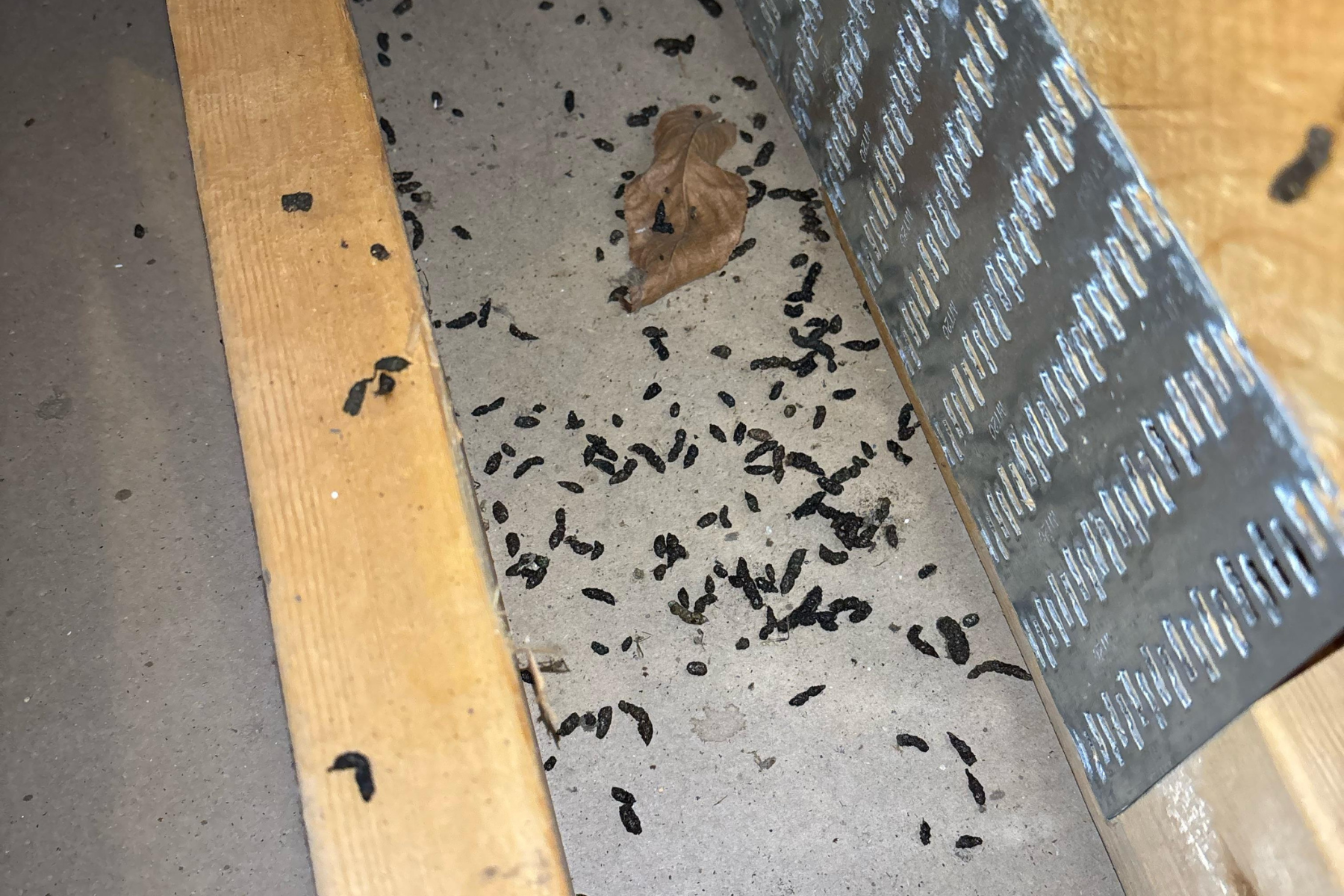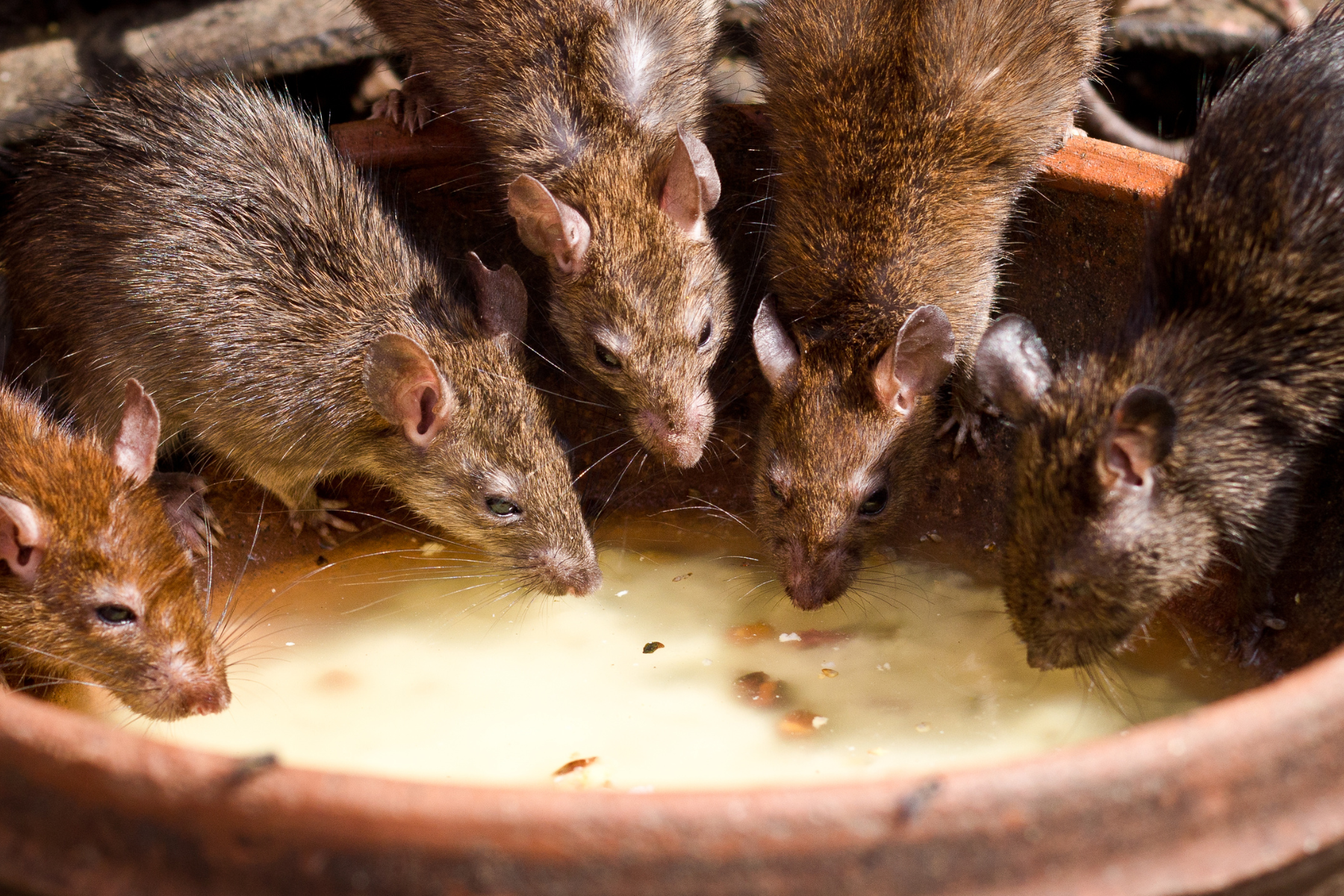Rodents may be small, but they leave behind some serious health hazards. One of the most obvious signs of a rodent infestation is the presence of droppings. While they may look harmless at a glance, rodent feces can carry dangerous bacteria and viruses that pose a threat to your family’s health. Understanding how to identify, clean, and prevent rodent droppings is essential to keeping your home safe and sanitary.
In this comprehensive guide, we’ll explore how to spot rodent droppings, the diseases they carry, safe cleanup methods, and long-term prevention strategies for homes and businesses in Maricopa County.
How to Identify Rodent Droppings
Rodent droppings can vary depending on the species, but they share some common characteristics. Knowing how to identify them correctly is the first step to assessing the scale of an infestation.
Mouse vs. Rat Droppings
- Mouse Droppings: Small, about 1/8 to 1/4 inch long, with pointed ends. They resemble black grains of rice.
- Rat Droppings: Larger, usually 1/2 to 3/4 inch long, with blunt ends. They tend to be darker and more pellet-like.
Where You’re Most Likely to Find Them
- Behind appliances
- Inside cabinets and drawers
- Along baseboards
- In attics and basements
- Inside pantries and food storage areas
Fresh vs. Old Droppings
- Fresh droppings are dark, moist, and soft.
- Old droppings turn gray, hard, and crumbly over time.
If you find fresh droppings, it’s a strong indication that rodents are still active in your space.
Health Risks Linked to Rodent Droppings
Rodent feces are more than just unsightly—they’re dangerous. Several harmful diseases and health conditions are associated with contact or inhalation of dust from rodent droppings.
- Hantavirus Pulmonary Syndrome (HPS): HPS is a rare but deadly disease carried primarily by deer mice. It’s transmitted through inhalation of airborne particles from dried rodent urine, droppings, or nesting materials. Early symptoms mimic the flu but can progress rapidly to respiratory failure.
- Salmonella and Other Bacterial Risks: Rodents can spread Salmonella through fecal contamination of food and surfaces. This bacteria causes diarrhea, fever, and abdominal cramps, especially in children and the elderly.
- Allergies and Respiratory Issues: Rodent droppings and urine can aggravate asthma and trigger allergic reactions. This is particularly dangerous for individuals with respiratory conditions or compromised immune systems.
What to Do if You Find Rodent Droppings
If you spot rodent droppings, it’s important not to panic. But also not to ignore them. Avoid sweeping or vacuuming, which can aerosolize harmful particles.
Don’t Sweep or Vacuum Droppings
Dry sweeping or vacuuming rodent droppings can release dangerous pathogens into the air. This increases your risk of inhaling bacteria and viruses like hantavirus.
Proper Safety Gear for Cleanup
Before cleanup, make sure you’re wearing:
- Disposable gloves
- A mask (preferably an N95 respirator)
- Safety goggles
- Long sleeves and pants
When to Call a Professional
If you find a large quantity of droppings, or if they’re in hard-to-reach areas like attic insulation, contact a professional pest control company. Trained technicians have the proper tools and experience to handle cleanup safely and effectively.
Safe Cleaning and Disposal Tips
Cleaning rodent droppings the right way reduces health risks and helps eliminate odor that may attract more pests.
Step-by-Step Cleanup Process
- Ventilate the Area: Open windows and doors for at least 30 minutes before cleanup.
- Spray Droppings with Disinfectant: Use a 10% bleach solution or commercial disinfectant. Soak thoroughly for 5–10 minutes.
- Wipe Up Droppings: Use paper towels and place used materials in a sealed plastic bag.
- Dispose of Waste Safely: Double-bag the waste and discard it in an outdoor trash bin.
- Disinfect Again: Re-spray the cleaned area and allow it to air-dry.
- Wash Hands Thoroughly: After removing gloves, wash your hands with soap and warm water for at least 20 seconds.
Recommended Disinfectants
- 10% bleach solution (1 part bleach to 10 parts water)
- EPA-approved disinfectants labeled for hantavirus and bacteria
What to Do After Removal
- Continue monitoring for signs of droppings
- Sanitize surrounding areas, especially food-prep surfaces
- Set traps or work with a pest control provider to eliminate the source
How to Prevent Rodent Infestations
Prevention is the best way to avoid the dangers associated with rodent droppings. Focus on exclusion, sanitation, and monitoring.
Seal Entry Points
- Close gaps larger than 1/4 inch around doors, windows, and pipes
- Use steel wool and caulk to seal cracks
- Install door sweeps and weather stripping
Eliminate Food & Water Sources
- Store dry food in airtight containers
- Clean up crumbs and spills immediately
- Fix leaky faucets and pipes
- Keep trash cans sealed and emptied regularly
Routine Inspections and Traps
- Check for droppings weekly in vulnerable areas
- Set baited snap traps or electronic traps near high-activity zones
- Schedule seasonal pest inspections, especially before winter and summer
Professional Rodent Control Services in Maricopa County
Sometimes, DIY isn’t enough. If rodents keep returning or you find droppings in large quantities, it’s time to bring in the pros. Local pest control experts understand the specific rodent behavior patterns in Arizona’s desert climate.
Services may include:
- Rodent exclusion (sealing access points)
- Attic and crawlspace cleaning
- Baiting and trapping programs
- Ongoing monitoring and seasonal treatment plans
Found rodent droppings in your home or business?
Discovering rodent droppings in your home or business is a serious health and safety concern. It demands immediate action. Don’t risk the potential for disease. The property damage. And the stress of a full-blown infestation. Schedule a professional rodent inspection and removal service with Spark Pest Control today. Our highly-trained team boasts a proven track record of successfully eliminating rodent infestations of all sizes. From a few stray droppings to extensive, established colonies.
We utilize safe and environmentally responsible methods. We employ a combination of exclusion techniques to prevent re-entry, strategic trapping to capture existing rodents. We targeted treatments to eliminate any remaining traces of the infestation. Our proven methods protect your property and family. We ensure long-term prevention. We’ve helped countless homeowners and businesses regain peace of mind. Reclaiming their spaces from the threat of rodents. Don’t wait. Contact us now to schedule your inspection and let our experienced team restore the safety and security of your home or business.
Frequently Asked Questions (FAQs)
1. What do rodent droppings look like?
Rodent droppings are small, dark pellets. Mouse droppings are about 1/8–1/4 inch long with pointed ends, while rat droppings are larger (up to 3/4 inch) and have blunt ends.
2. Are rodent droppings dangerous to my health?
Yes. Rodent droppings can carry diseases like Hantavirus, Salmonella, and Lymphocytic choriomeningitis (LCMV). Inhalation or direct contact can cause serious illness, especially in children and those with weakened immune systems.
3. How can I safely clean rodent droppings?
Avoid sweeping or vacuuming. Instead, wear gloves and a mask, spray the droppings with disinfectant, and use paper towels to wipe them up. Double-bag the waste and dispose of it in an outdoor trash bin.
4. Can I get sick just from being near rodent droppings?
Yes, particularly if the droppings have dried and particles become airborne. Hantavirus and other pathogens can be transmitted through inhalation, even without direct contact.
5. What disinfectant should I use to clean rodent droppings?
Use a 10% bleach solution (1 part bleach to 10 parts water) or an EPA-approved disinfectant that targets hantavirus and bacteria.
6. Where do rodents usually leave their droppings?
Rodents often leave droppings in secluded areas like attics, basements, behind appliances, in pantries, or along baseboards. Frequent droppings near food or nesting areas indicate active infestations.
7. How can I tell if rodent droppings are fresh?
Fresh droppings are dark, shiny, and soft. Older droppings are dry, gray, and crumbly. Finding fresh droppings is a sign of current rodent activity.
8. Should I call a professional to remove rodent droppings?
If the droppings are extensive, located in difficult-to-reach areas, or accompanied by a full infestation, it’s best to call professional pest control and cleanup services.
9. What diseases can rodent droppings cause?
Rodent droppings can transmit several diseases including Hantavirus, Salmonellosis, LCMV, and Leptospirosis. These can be severe or even fatal if left untreated.
10. How do I prevent rodents from returning?
Seal entry points, eliminate food and water sources, keep your home clean, and schedule routine pest inspections. Professional exclusion services are highly effective in rodent-prone areas like Maricopa County.



